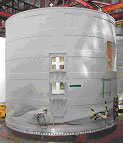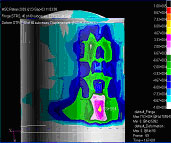Engineers spend a great deal of time and effort developing mathematical models of stochastic engineering systems in order to avoid the costly alternative of testing actual systems for failure. To ensure the accuracy of a model, it needs to undergo validation and verification (V&V), or the systematic management of modeling error. Model validation is achieved by determining whether the theory upon which a model is based accurately describes the behavior of the system in question. Model verification is the process of determining whether the mathematical steps taken in the course of an analysis are performed correctly and in keeping with the underlying theory.
Verification and validation under uncertainty presents new challenges that must be confronted. A practical methodology for model validation must account for the uncertainty which will inevitably be encountered. Full-scale testing of many engineering systems is impossible due to economic constraints. However, without full-scale test results to compare with computer model predictions, a robust model validation cannot be performed. Therefore, extrapolation techniques must be incorporated to allow for inferences to be made concerning the suitability of a model for an input domain for which test data is not available.
|
|
|
|
|
Fig. 1 |
Fig. 2 |
Fig. 3 |
|
SRB Splashdown Sequence |
Damaged Forward Skirt |
Dytran Analysis |
Example Problem:
NASA witnessed damage to the solid rocket booster (SRB) during splashdown (Fig. 1) in the ocean following space shuttle launches in the 1990s. Beginning with STS-37 in May 1991, unexplained damage to the forward skirt of the SRB was observed upon recovery. Another instance of forward skirt damage occurred later that year, and STS-63 in 1995 saw damage to the forward skirts of both boosters. In all five forward skirts experienced damage, but a subsequent change in the release mechanism of the parachute chords seems to have solved the problem for the time being. Fig. 2 shows the nature and the extent of the damage.
As a result of the SRB forward skirt problem, NASA has investigated modeling tools for fluid-structure impact scenarios. Commercially available software packages that use FEM for fluid-structure impact such as MSC.Dytran (Fig. 3) and LS-Dyna are available. These codes use separate Eulerian and Lagrangian solvers for the fluid and structural analyses respectively. The codes use an explicit time step, and therefore require long computational times even for short-duration impact events. Since full-scale testing of SRB impact simply can not be conducted, the suitability of these codes for modeling of SRB splashdown is unknown.
It is the purpose of this research to develop and validate a numerical methodology for the analysis of stochastic fluid-structure impact problems such as the SRB splashdown sequence. The analysis framework will include validation of MSC.Dytran and LS-Dyna FEM codes through laboratory experimentation. The experimental set-up will consist of an aluminum cylinder outfitted with strain gauges and then dropped into water. The stress history will be recorded and compared with the FEM prediction for a cylinder of the same dimensions and impact trajectory. Model verification will focus on the necessary resolution required by the finite element model to produce accurate results. Data filtering schemes will be investigated as part of an effort to define a clear failure criterion for material yielding and structural failure as a result of fluid-structure impact. Finally extrapolation concepts will be studied in order to gauge the applicability of fluid-structure codes to scenarios for which real-world data is unavailable and robust validation therefore impossible.


